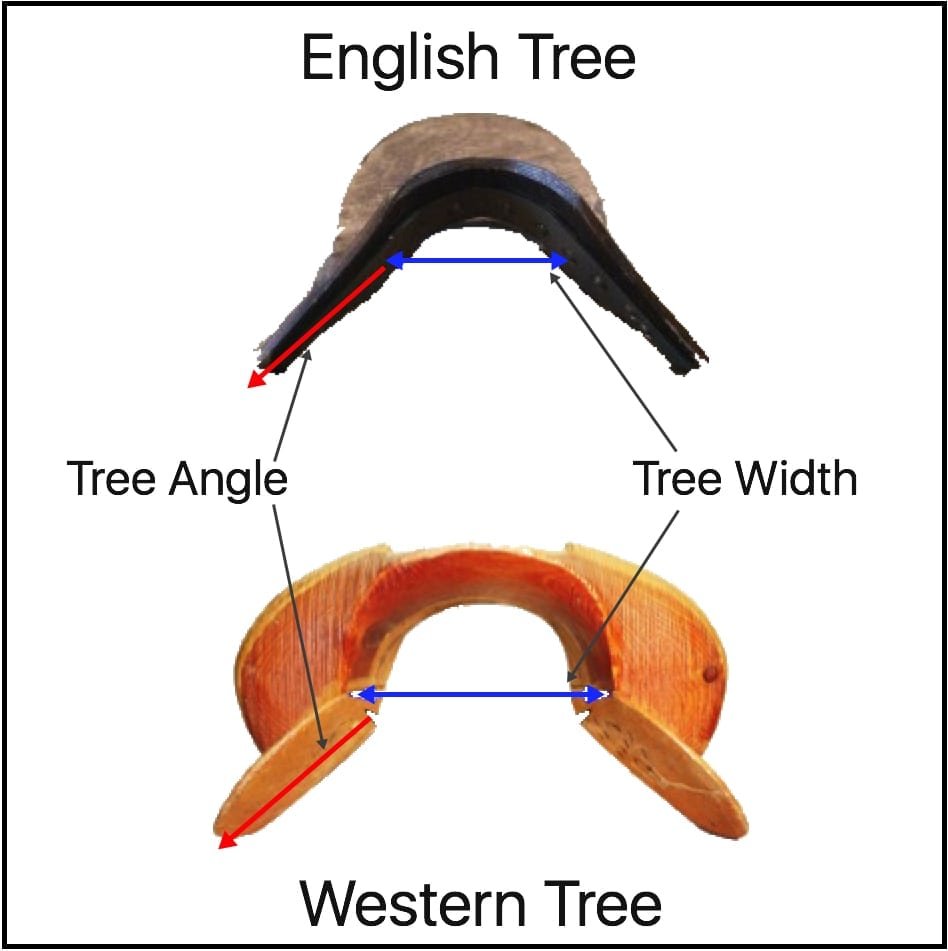Tree Angle: Part 1 – Too Wide
One of the most common issues that I run into in saddle fitting is that the angle of the tree (across several different models, styles and disciplines) is too wide. In the saddle fit world often a rider will think that if a saddle is too wide they can just add a pad and it will fill in the difference. While that can sometimes be the case more often it causes more severe pinching. Let’s explore why.
First of all lets talk about what tree width is. There are two factors width – the space between the panels or tree bars at the front of the saddle and angle – the angle of the tree arm from the top of the bar to the bottom in a western saddle and from the point where the panel starts (can vary slightly by brand/discipline) to the bottom of the tree on an english saddle.
English and Western tree angle
So now that we have established what tree angle is let’s look at what it looks like on the horse when it is too wide. If the angle of the tree is wider than the angle of the horse’s wither it puts a lot of stress and pressure on the muscles of the wither area.
Examples of English and Western Tree that are too wide in the angle
So why is tree angle too wide such a problem? One of the most important things to remember in saddle fit is that the weight of the rider is going to sit on the horse’s back. It is EXTREMELY important to have a tree that disperses this weight on the back. An equine back in no way shape or form is designed to carry a rider. The saddle allows the horse to do this in relative freedom and comfort. When the tree angle is too wide it puts a lot of pressure on the withers that connect in the top of the wither. In addition, there is a trigger point in the wither that causes the horse to invert and life their head. Between the muscles and the trigger point tree angle too wide is the number one cause of girthiness in horses. It is a reaction to the tree being pulled down on the wither.
Muscles and trigger points in wither
Too add to the difficulty of fitting the tree angle the wither area is where we see the most amount of change in the mature horse through fitness. Horse’s have no collar bone and therefore no shoulder joint and so how they are ridden can affect their conformation. In a future post I am going to talk about spinal stabilization and global stabilization muscles but to summarize when the saddle pinches the wither and causes tightness in the neck and back it can actually push the ribs more downhill. This results in a gap in front of the wither, rotation of sacrum joint (hunter’s bump) and compression of the joints at the base of the neck (ewe neck). When the horse is comfortable and fit the shoulder pushes wider the rib cage elevates and the horse fills in in front of the wither and in the back. This is how a saddle that does fit can then not fit as the horse gains or loses fitness.
Rib cage alignment changes through fitness
In a future post I want to further explore the muscles that interact with the saddle and how it affects equine confirmation. However, I have been seeing a lot of tree angle issues recently and wanted to share this information for people to be able to assess this angle on their own equipment!




